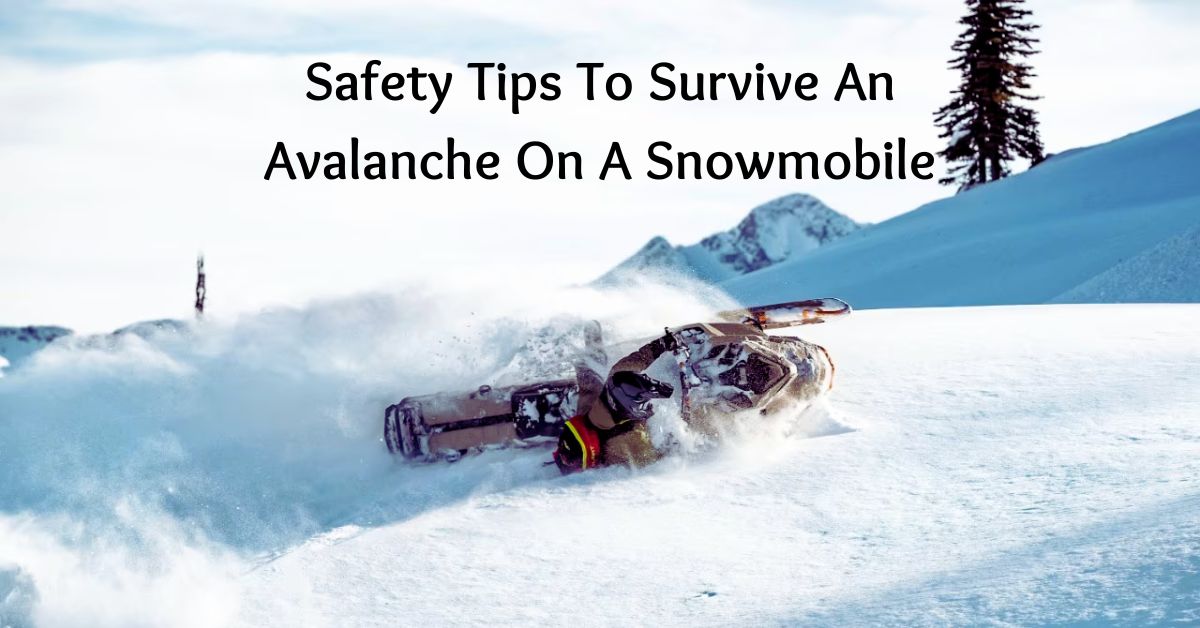Avalanche refers to the rapid flow of snow down a slope, such as a hill or a mountain. Large avalanches, which are mostly made up of moving snow and air, have the power to catch and move ice, rocks, and trees. An average of 24 people die in avalanches every year in the United States. So knowing how to survive them is a must even if the area you are snowmobiling is avalanche free.
Here is your complete guide on How to Survive an Avalanche on a Snowmobile.
Here’s Your Complete Avalanche Survival Guide
What causes Avalanches?
For a long time, it was believed that the echo of a human voice in the mountains might remove enough snow to start one. But there is no single cause of avalanche development. A person’s weight can also cause an avalanche. A quick increase in weight might shatter a vulnerable region of snow. However, scientific study of avalanches reveals that a variety of environmental elements are at work. Here we have discussed some of the major causes of avalanches.
- Snowstorm and Wind Direction: Avalanches are more likely to occur during heavy snowstorms. Wind generally blows from one side of a mountain slope to the other causing snow to shift in several spots at the same time. This causes the movement of snow thus leading to avalanches.
- Heavy precipitation: The first is heavy snowfall, which deposits snow in unstable locations and exerts strain on the snowpack. Summer precipitation is the most common source of wet snow avalanches. Precipitation causes the accumulation of layers of snow and sometimes water thus increasing overall weight which leads to snow movement and thus avalanches.
- Human Activity: In recent years, humans have had a role in the initiation of several avalanches. Winter sports that demand steep slopes frequently place undue strain on the snowpack. Snowmobiling, skiing, and other movements may lead to avalanches if the snow is already loose enough.
Key Steps To Survive An Avalanche On Snowmobile
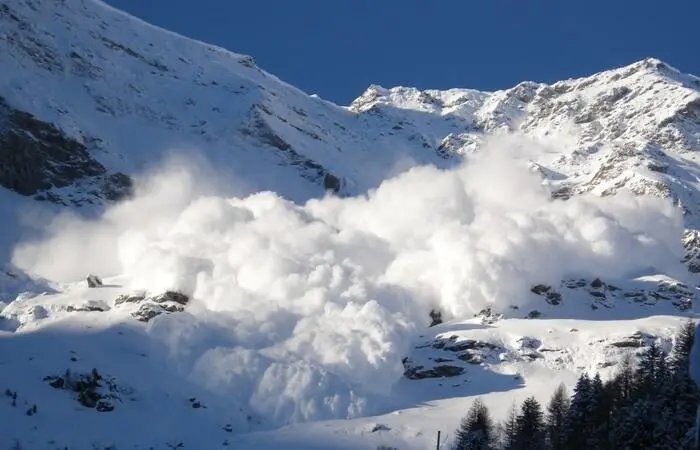
You can Survive an Avalanche on a Snowmobile by first learning a few things that are necessary. Physical trauma, suffocation, or hypothermia are the most common causes of avalanche fatalities. Survival tactics include getting out of the avalanche before it stops, avoiding total burial, and shortening the time the victim is buried.
If with a passenger, request that passengers remain seated in order to preserve the lowest feasible center of gravity. This keeps the snowmobile maneuverable. Snowmobile drivers should try to outrun the avalanche, according to the Forest Service National Avalanche Center which can be quite difficult as they reach 80mph speed.
Take these steps if you get caught into the avalanche:
- Give up your skis or snowmobile. It can draw you down and increase the torque on your extremities, potentially leading to fractured bones.
- Keep your pack with you if it is light and has emergency supplies.
- If you are flung from your snowmobile, attempt to get away from it as soon as possible.
- Use swimming motions to fight your way to the avalanche’s surface.
- To get away from the snow, grab a nearby tree.
- As the snow begins to slow, cup your hand or arm over your mouth to create an air pocket. As the snow comes to a halt, thrust any portion of your body through it so that rescuers can see you.
- Wait for help. Maintain your cool. Save your oxygen. Do not try to summon assistance unless you hear rescuers above you.
5 Key Safety Guidelines To Avoid Avalanches
- Purchase the Equipment: Everyone in your group will require an avalanche transceiver, shovel, probe, and an understanding of how to utilize these items.
- Get the Education: At the very least, everyone in your group should take an avalanche training course.
- Obtain the Forecast: The weather forecast is essential, yet it is continuously changing. Plan your ride based on the current avalanche and weather forecast.
- Be aware: If you witness recent avalanche activity and unstable snow, you should presume that riding on or beneath slopes is unsafe.
- Get out of the way: Always travel one at a time on all slopes, and never go up to assist a trapped friend, or group up near avalanche run-out zones.
Best Avalanche-Safety Equipment
Avalanche Beacon
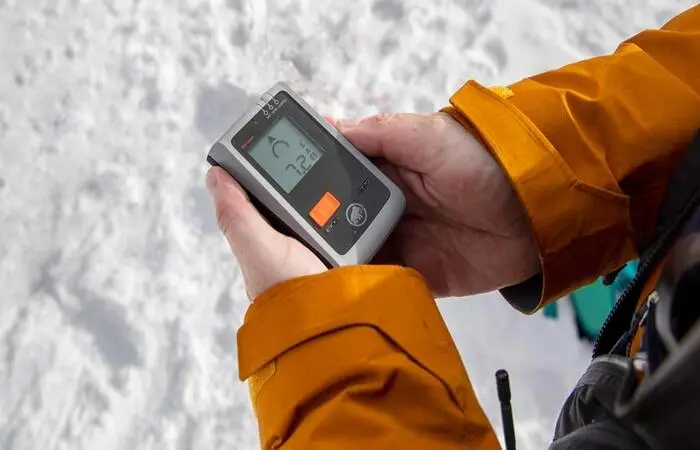
Most manufacturers provide a range of top high-end versions as well as more cheap basic variants. The highest models include features such as searching for multiple burials in restricted regions. This can be quite useful in locating several victims. Such functions are only available to the most experienced users.
Beacons (also known as transceivers) with more than three antennas are thought to have an advantage over beacons with only two or one antennae in terms of speed, clarity, and accuracy of received or broadcast signals. The basic types are significantly easy to use and are suited for any average winter sportsman/woman.
Click here to check out some good Avalanche Beacons on Amazon.
Avalanche Shovel
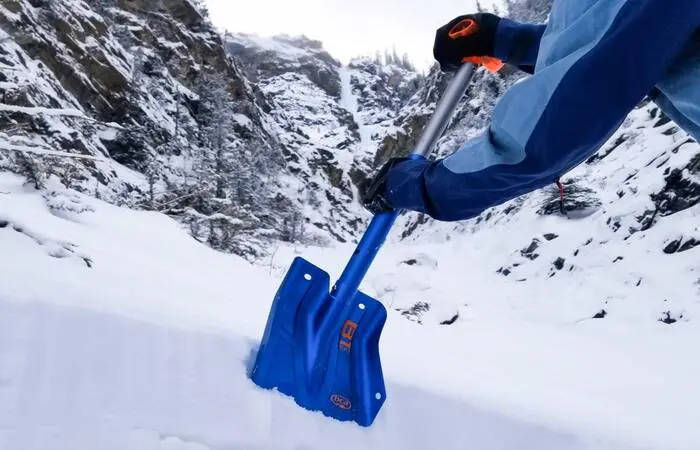
Aluminum blades should be included with avalanche shovels. They can differ in a variety of ways. The larger the shovel blade, the more snow you can remove per movement. The ideal size is 28x25cm. Blade diameters such as 2121 cm are insufficient for efficient shoveling. Except for lightweight shovels used in ski-tour racing, the weight of each shovel is normally determined by the size of the blade.
Consider a telescopic handle, and some manufacturers even provide the option of installing your blade like an axe. As a result, your shovel becomes a multipurpose tool. Shovel blades can be fastened to your handle or separated to conserve room in your rucksack.
Click here to check out some good Avalanche Shovels on Amazon.
Avalanche Probe
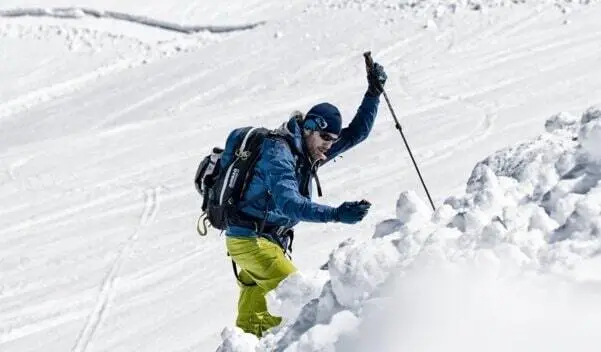
Avalanche probes should have a quick-release system and be at least 240 cm long. Longer probes are usually preferable in severe avalanche accidents. Except for ultra-light variants, the diameter and weight of aluminum probes of the same length are virtually identical. A 240 cm probe weighs around 250g. Carbon models are slightly lighter. Knowing the depth at which your victim is located allows you to boost the chances of the victim’s survival.
Click here to check out some good Avalanche Probe on Amazon.
Advanced Saftey Gear
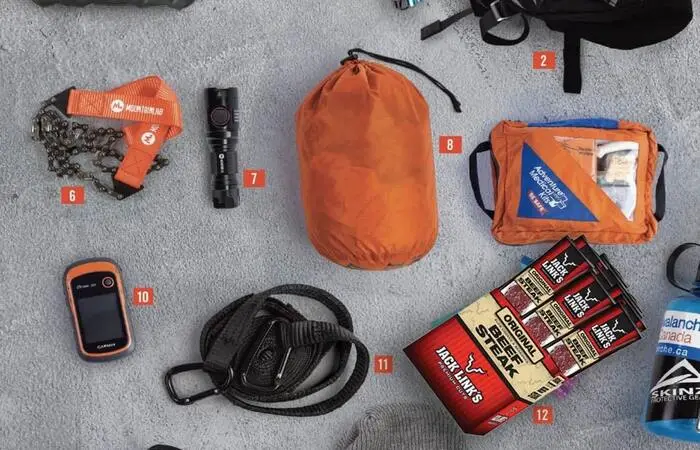
A cell phone, a first-aid kit, and a bivy sack are examples of sophisticated safety equipment. This equipment is not needed for all ski tourers, but it should be included in the kit of some of your fellow ski tourers in your group.
Avalanche Airbags

Avalanche airbag backpacks can significantly lessen the chance of being completely buried in a moving avalanche. The airbag functions as a larger part of your body, allowing you to float close to the avalanche’s surface and keep parts of your body or your entire body above avalanche debris.
To release your airbag backpack during an avalanche slide, you must manually pull the handle out. The airbag can be filled in two ways: pressure-induced systems are used by manufacturers such as Arva, BCA, Mammut, Ortovox, and Scott to fill the airbag with air.
The cartridge, which is attached to the airbag within your backpack, releases the pressure. Each manufacturer creates slightly different systems with unique cartridges that are not usually interchangeable across brands.
Click here to check out some good Avalanche Airbags on Amazon.
Final Word On Survival Tip
If you become trapped in an avalanche, taking these precautions may help you survive.
- Continue to ride your snowmobile to the side of the avalanche.
- Keep your pack on if you’re wearing one. It will aid in floating.
If you crash your snowmobile:
- Push yourself away from the machine so you don’t get hurt.
- To stay on top of the snow, fight hard by “swimming.”
- Roll on your back so that you are face up when you come to a halt.
- As the avalanche subsides, raise your arm straight up. Then, using your arm, expand your chest and generate airways.
- Keep your cool and try not to worry. This will extend the life of your oxygen.
This concludes our article on Survive An Avalanche On A Snowmobile. We hope you find this article helpful for your next snowmobiling trip.
You may also like Best Places To Snowmobile In Idaho
FAQs (Frequently Asked Questions)
How to survive an avalanche on a snowmobile?
Do the following things to survive an avalanche on a snowmobile:
1. Try to stay on your snowmobile and ride to the avalanche’s side.
2. Keep your pack on if you’re wearing one. It will aid in floating.
3. If you fall off your snowmobile, push yourself away from the machine so you don’t get hurt.
Can a snowmobile outrun an avalanche?
An average-sized dry avalanche moves at roughly 80 mph, making it nearly hard to outrun or even move out of the course of an avalanche. A fast snowmobile has a chance, but everyone else has only a small chance.
How can snowmobiles prevent avalanches?
Snowmobiles don’t prevent avalanches.
What is most likely to trigger an avalanche snowmobile?
The slopes are immediately affected by weather variables such as temperature and wind. Changes in the snowpack can happen quickly, triggering an avalanche. Familiarize yourself with the terrain through which you will travel. Avoid steep slopes and valleys that are prone to slipping.
Do snowmobiles cause avalanches?
Not always, There are many other factors that determine if the snowmobile will cause an avalanche or not.
Why should a passenger on a snowmobile stay seated?
Request that passengers remain seated in order to preserve the lowest feasible center of gravity. They can impair your ability to maneuver the machine by standing. Warn passengers not to stretch their arms and legs outside the vehicle, where they could collide with trees or bushes.
What are the odds of surviving an avalanche?
The American Avalanche Association (AAA) released a graph indicating that if you are extricated within 15 minutes, your chances of survival are 92%. After 35 minutes of burial, the chances drop to 37%. To put this into context, after 15 minutes of burial time, the risks of death increase by around 3% per minute.

